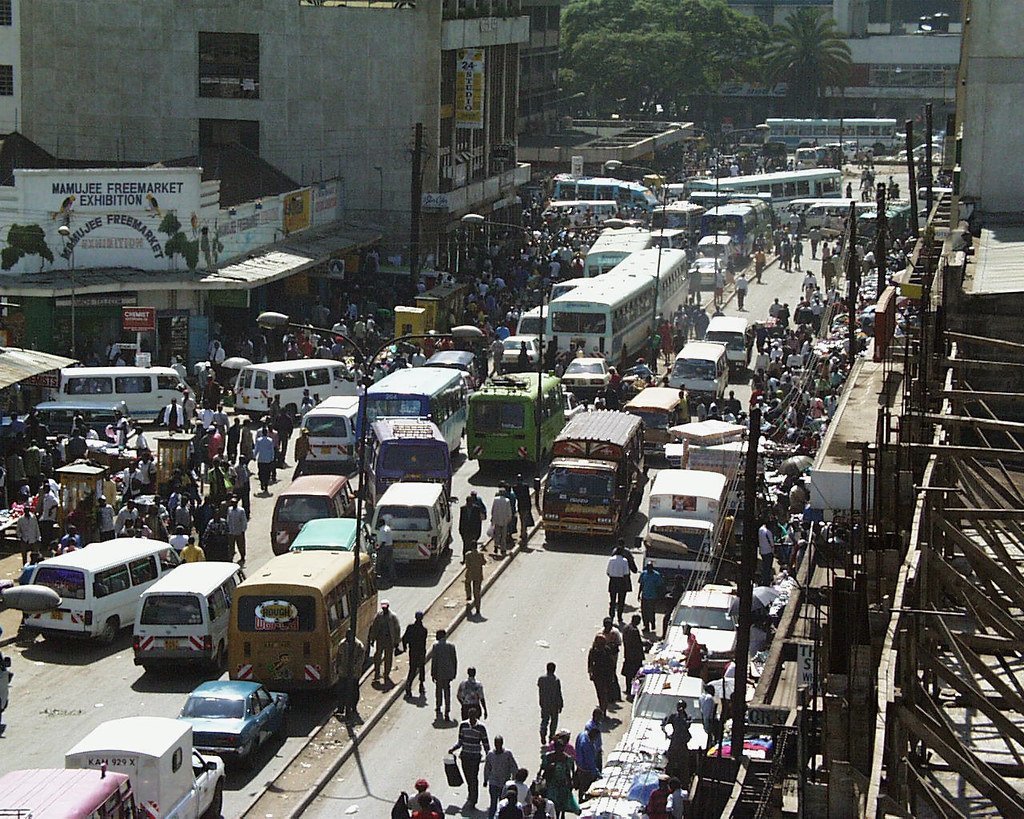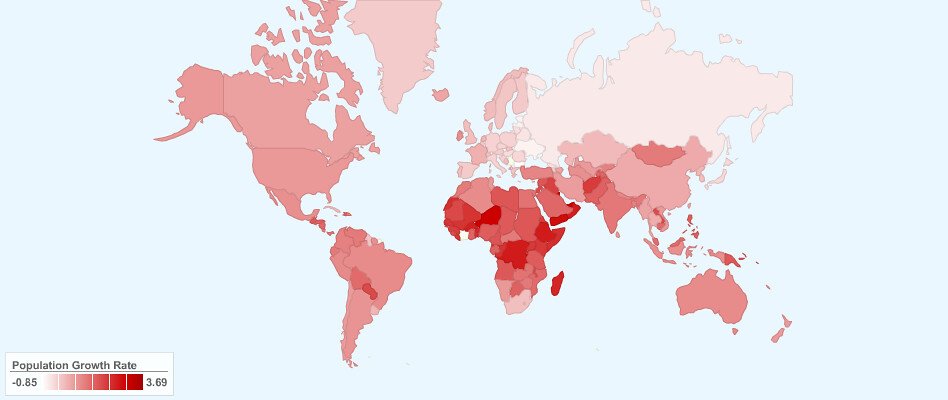The world is experiencing massive population growth, most of it in the Global South. If nothing is done to slow the rate, repercussions will be felt in politics, the economy and the environment.
A crowded street in Nairobi, Kenya, which has one of the highest population growth rates in the world. rogiro. CC BY-NC 2.0.
The world’s population is growing at an alarming rate. In 1950, the world’s population was estimated to be around 2.6 billion. In 2022, it is almost 7.9 billion. While it is true that the world theoretically has enough resources to support the entire current global population with room to spare, the rate of population increase is a cause for concern. Most of the world’s resources are concentrated in the countries of North America and Europe, but most of the world’s population growth is located in the Global South, which can negatively affect the development of those countries.
When agricultural societies start to industrialize, the death rate usually drops due to advances in medical care. The birth rate stays high for a while until social changes encourage more women to join the workforce and have fewer children. Many countries in sub-Saharan Africa are stuck in a demographic transition trap.
Current world population growth rate by country. Digital Dreams. CC BY 2.0.
As countries in the Global South start to industrialize, their death rates are falling, but their birth rates are not dropping to match the death rate, resulting in explosive population growth. This demographic trap occurs when “falling living standards reinforce the prevailing high fertility, which in turn reinforces the decline in living standards.” When developing countries do not make the necessary social changes to accompany industrialization, the birth rate stays high even as the economy transitions away from agriculture. These countries are slow to change their view on the ideal family size in light of emerging industrialization, and many are still engaged in labor intensive industries which reinforce the need for many children to provide free labor.
This explosive population growth has detrimental effects on both the developing country’s economy and environment. It leads to political instability, as the deluge of people overwhelm governments, causing states to fail. Governments likely cannot provide enough resources to the ever-growing population, trapping people in a cycle of poverty. Many families are impoverished due to using their resources for taking care of many children, perpetuating a cycle of poverty.
The inability for a government to provide for its population results in a failed state. Of the 20 top failing states defined by the Failed States Index, 15 of them are growing between 2 and 4 percent a year. In 14 of those states, 40% or more of the population are under the age of 15. Large families are the norm in failing states, with women having an average of six children.
Not only does excessive population growth lead to failed states and economic problems, but it also leads to environmental problems as well. As the Global South develops, more and more people there are becoming consumers of energy and resources, contributing to climate change. In Madagascar, population growth has “triggered massive deforestation and massive species extinction.” The current rate of population growth is unsustainable in the long run economically, politically and environmentally.
However, previous efforts to decrease the birth rate in the Global South has led to the dehumanization of many women. According to Columbia professor Dr. Matthew Connelly, Americans developed programs to “motivate medical workers to insert IUDs [intrauterine devices] in more women” in South Korea and Taiwan, causing “untold misery” as there were not enough clinics to deal with the possible side effects of those procedures. Puerto Rico became a “proving ground for both the birth control pill and state-supported sterilization” due to American policy despite pushback from religious authorities. These efforts deprive women of their agency to plan their own families.
Interventions to limit population growth must ensure that families, and specifically women, have agency over their bodies. Comprehensive sexual education is an option to enable people to understand the reasons behind the different methods to decrease birth rates. Families must be able to make an informed choice on their family size, and such sexual education is a popular idea to achieve that in a humane and dignified manner.
Bryan Fok
Bryan is currently a History and Global Affairs major at the University of Notre Dame. He aims to apply the notion of Integral Human Development as a framework for analyzing global issues. He enjoys hiking and visiting national parks.





